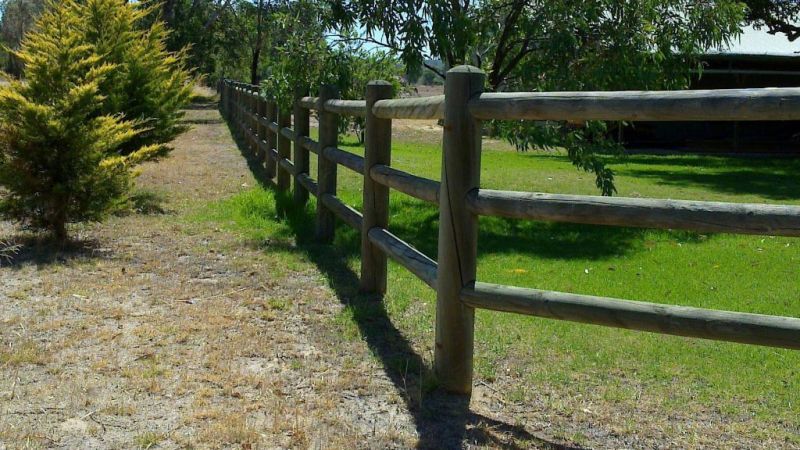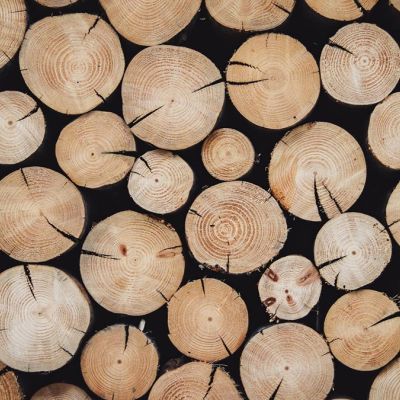WANT A GREAT DEAL?
Add products & we'll be in touch soon!


10 Tips to Maintaining Wooden Fencing
Wood is one of the most popular types of fencing in Australia since it matches the aesthetic of most Australian houses as well as offers good security and privacy – you can browse our stock of rural fencing here. Below are ten tips in keeping your wood fencing and fence panelling in tip-top shape:
Know the type of wood used for your fence
The first step to maintaining wooden fence panels is to know the type of wood used for them.
In Australia, these are the most common types of wood used for fences:
Hardwood. Produced mainly in NSW or Southern Queensland, hardwood is used in most wood fences because it’s highly durable and can withstand the harsh Australian weather. You just need to invest in high-quality hardwood to make sure that it doesn’t suffer from splitting.
Treated/untreated pine. Treated pine plinths, rails, and palings are massively produced in Australia so you can see a lot of them being used for wooden fences, panels and gates. This type of wood is also used in decks and pergolas because it’s highly efficient yet very affordable.
Pressure-treated wood. Although a bit pricey, pressure-treated pine wood is one of the best options for wooden fencing. Among the reasons are its durability and resilience to wear and tear because it is chemically treated to be safe from pests and decay.
It also has a beautiful green colour that eventually turns grey over the years. It is widely used for rails, plinths, and palings because of its durability and excellent quality.
Pressure-treated wood is usually treated with a Chrome, Copper, and Arsenic (CCA) solution to protect it against rot.
Cypress pine. If hardwood or treated pine is out of your budget, you can opt for white Queensland cypress pine instead. It is naturally termite-resistant, highly durable, and can withstand weather conditions in Australia.
Cypress pine is ideal for fence posts because of its strength and structural integrity. And since the pine itself produces natural oils, it has a strong defence against decay and insects.
To ensure that you follow the proper steps in maintaining your wooden fencing, you can ask your contractor to know exactly what type of wood was used on your fence.
Schedule regular cleaning
Although your wood fence panelling is designed not to require constant cleaning, it’s best to include general fence cleaning in your schedule. Regular cleaning can remove any accumulated dirt and debris that could make your fencing more prone to wear and tear.
The most efficient way to do this is by using a pressure washer. However, you can also scrub any problematic areas by hand. Make sure that you choose a sunny day to clean your wooden fence, panelling, or gate so that it dries quickly.
Treat your fence
The experts would tell you to invest in treated timber because it will last longer than untreated wood. But if you already have existing wooden fencing, it’s not too late to have it treated to extend its life.
Many homeowners stain their wood fence right after installation to help protect it from rotting. Treated pine is also resistant to algae growth, decay, and termites, making it a better option than untreated wood.
Do your research on the best treatment for your wooden fence panels, depending on their type.
Do annual inspections
Your wooden fence may look good on the outside, but there may be some damages that aren’t initially visible. This is why it’s important to do annual inspections to oversee any damage that needs attention so that you can quickly repair wooden fencing.
Take a walk around your fence and look closely for any signs of rotting. Look at each section of your wooden fence to make sure that it’s still attached.
You can tighten screws or replace broken boards right away and fix leaning sections of your fence by seeing to it that your posts are secured firmly on the ground.
Repaint and re-seal your fence
If you have painted wooden fence panels, you may need to have them repainted every three to four years. Paint doesn’t only improve the appearance of your fencing, but it can also protect it against the elements.
You can either do a complete repaint or just some touch-ups if you’re on sticking to a budget.
It’s also advisable to re-seal your wooden fence at least once or twice a year, especially after repainting it. Re-sealing adds another layer of protection to your wooden fencing and extends its life.
Check your fencing after weather issues
No matter how you take care of your fence, Australian weather can be very unpredictable.
Heavy rain, high winds, extreme heat, and hail are out of your control, and they can cause some serious damage to your wooden fence panels or wooden gates. What you can do is take the necessary measures to repair these issues before they get worse.
Make it a habit to inspect your fence after a weather disturbance and fix any issues you can see. It is extremely beneficial to invest in treated wooden fencing designed to withstand the harshest weather in Australia and backed by a premium warranty.
Invest in termite prevention
Termite infestation has always been a huge problem in Australian households, known to cause some serious damage to anything made of wood.
Termites thrive mostly in moist soil, so it’s crucial to make sure that your fence is above the ground to keep termites from finding their way inside the wood.
Now, if your fence is touching the ground, it’s smart to have it treated against termites since it will serve as protection for your wood fence panelling.
Trim bushes and other plants near your fence
Any plants, bushes or branches may cause damage to your wooden fence since they can hold moisture and can be a breeding ground for termites. Of course, you also don’t want any bushes and plants to get in the way of your beautiful wooden fencing, which is why it’s very important to include trimming as part of your maintenance routine.
If you don’t have time to do it yourself, you can always hire experts to trim bushes and plants in your yard to make sure that you keep your wooden fence panels in good shape.
Take care of repairs immediately
High-quality wooden fencing would typically last for at least 15 years, even with little maintenance.
But if you want to extend the life of your wood fence panelling, you need to pay attention to issues and have them repaired right away. The reason is for you to maintain the integrity of your wooden fence and save yourself from much bigger expenses in the long run.
Stock up on repair supplies
Of course, it is wise to have some essential materials and tools at home, so you can do a quick fix whenever you notice any problems with your wooden fencing. Should you need to replace panels or poles, invest only in the best materials from well-known brands.
Permapole, for instance, produces treated poles that are of the highest quality and are guaranteed to last for many years since they are resistant to termites, mould, and other elements that can cause serious damage to your wooden fence panels.
The bottom line
Indeed, maintaining your wooden fencing is a huge responsibility. Some property owners believe that their job is done after choosing and installing their fence. But it’s just the beginning of keeping it in good shape. So, if you have wooden fencing at home, make sure that you use these tips to maintain your investment.
Start by investing only in the highest quality materials. Check out our wide range of stock at Direct Trades Supply and reach out to our staff for any tips, tricks, and general help with repairs, replacements, maintenance, and all things fencing! Alternatively, check out our online range of fencing materials, or even have a look at our general construction materials and tools.
Popular Articles

Company
123 Kelvin Road
Maddington WA 6109
P: 1300 123 387 (DTS)
E: [email protected]
Opening Hours
6:30 AM - 5:00 PM Mon-Fri
7:30 AM - 12:00 PM Sat
Closed Public Holidays












